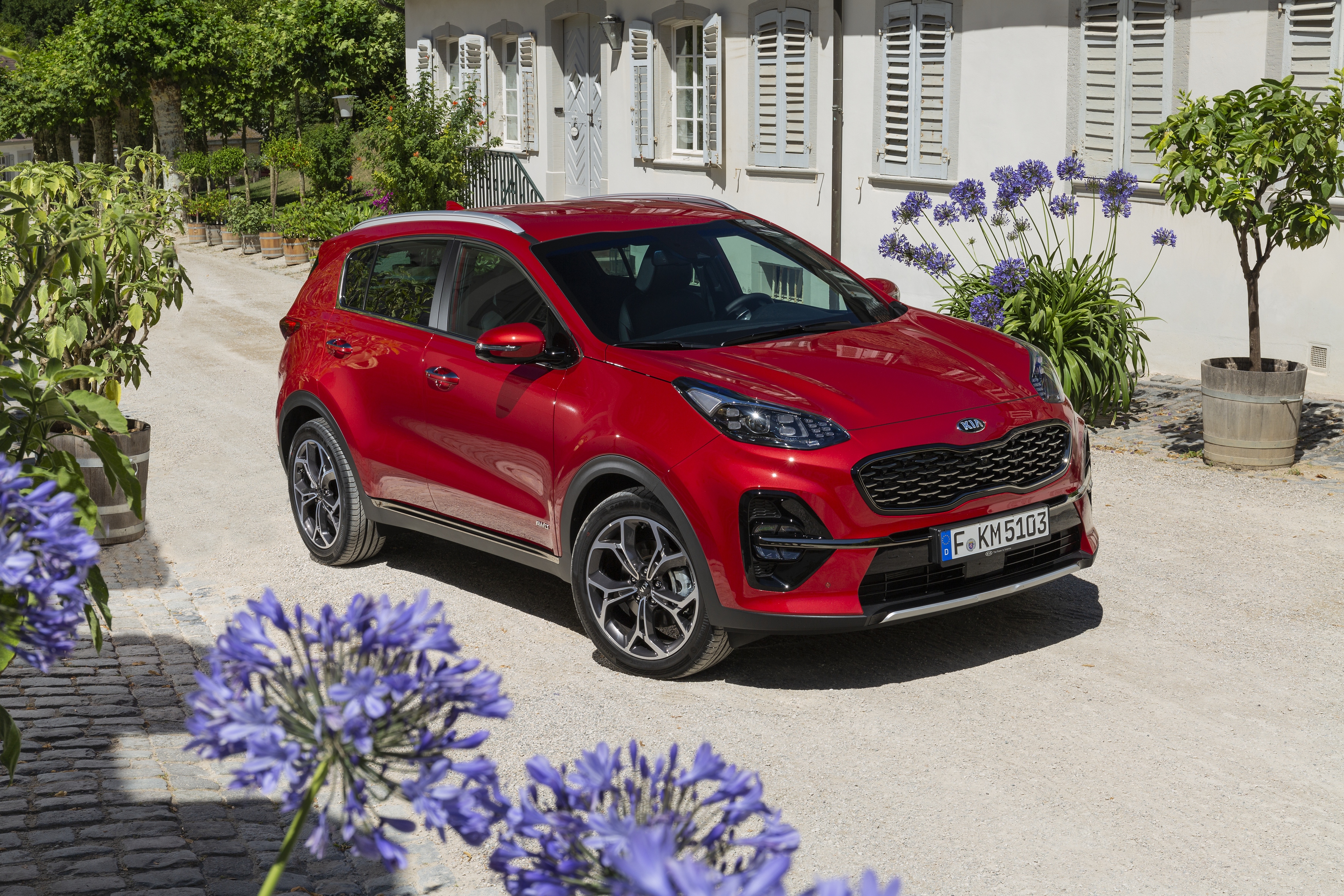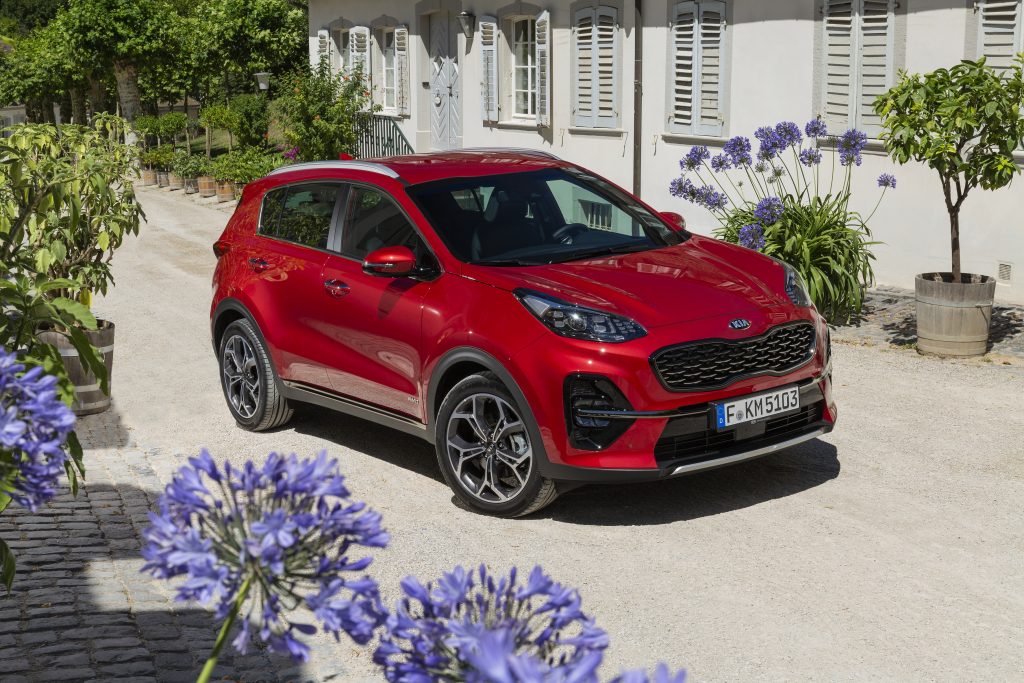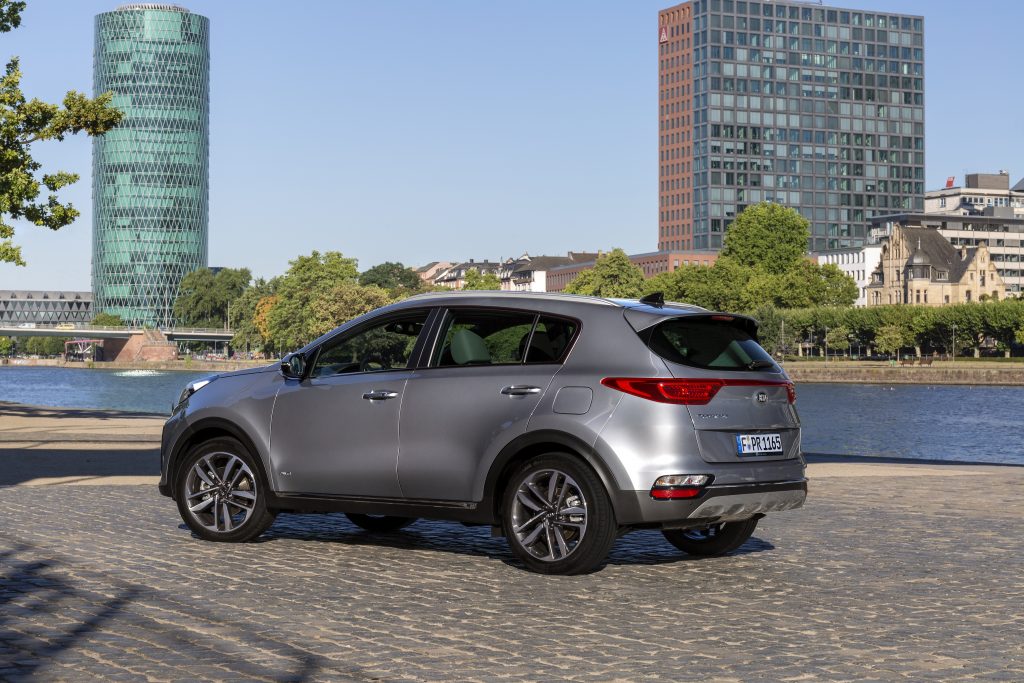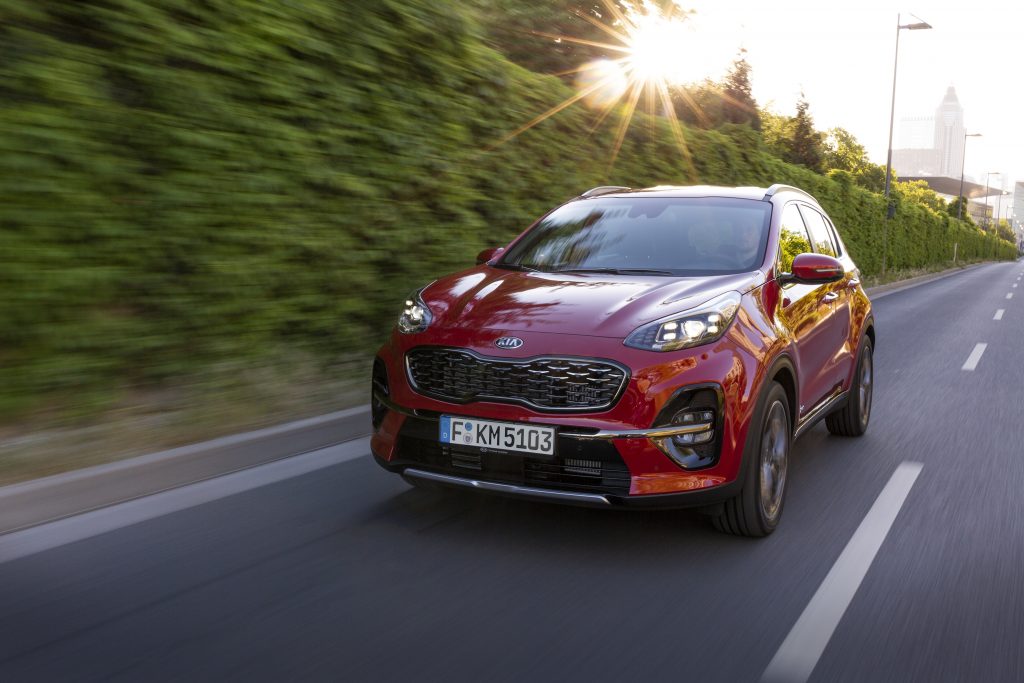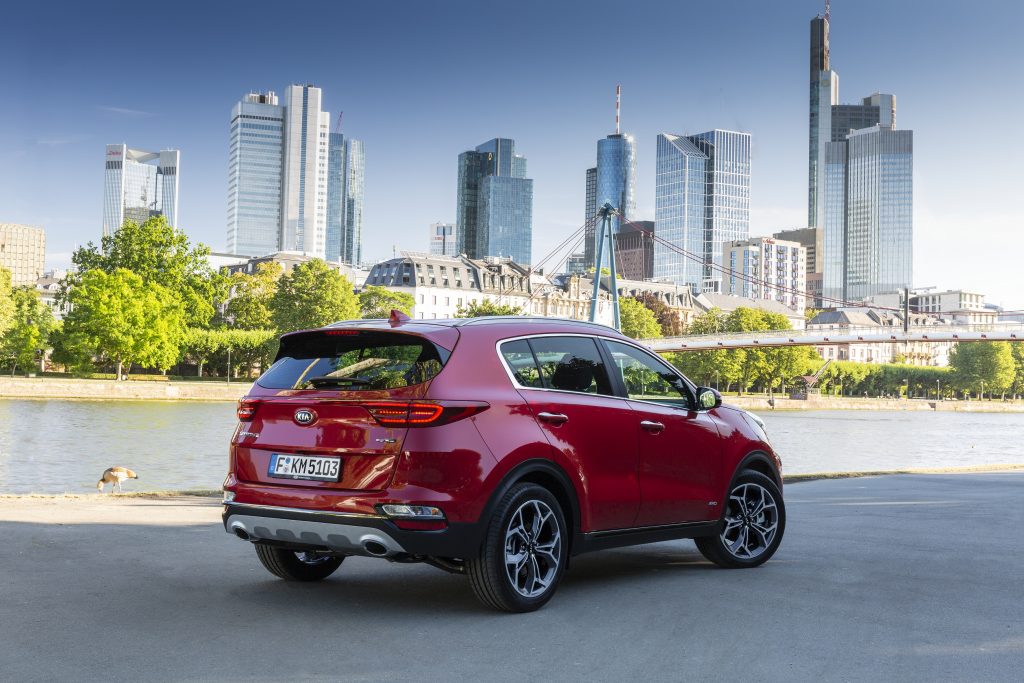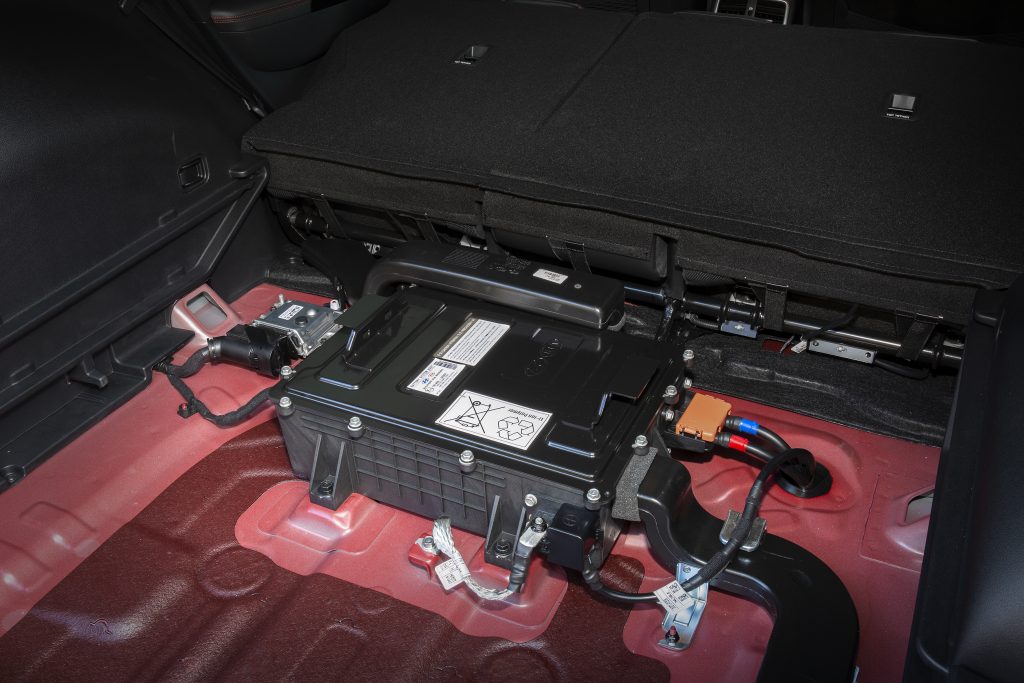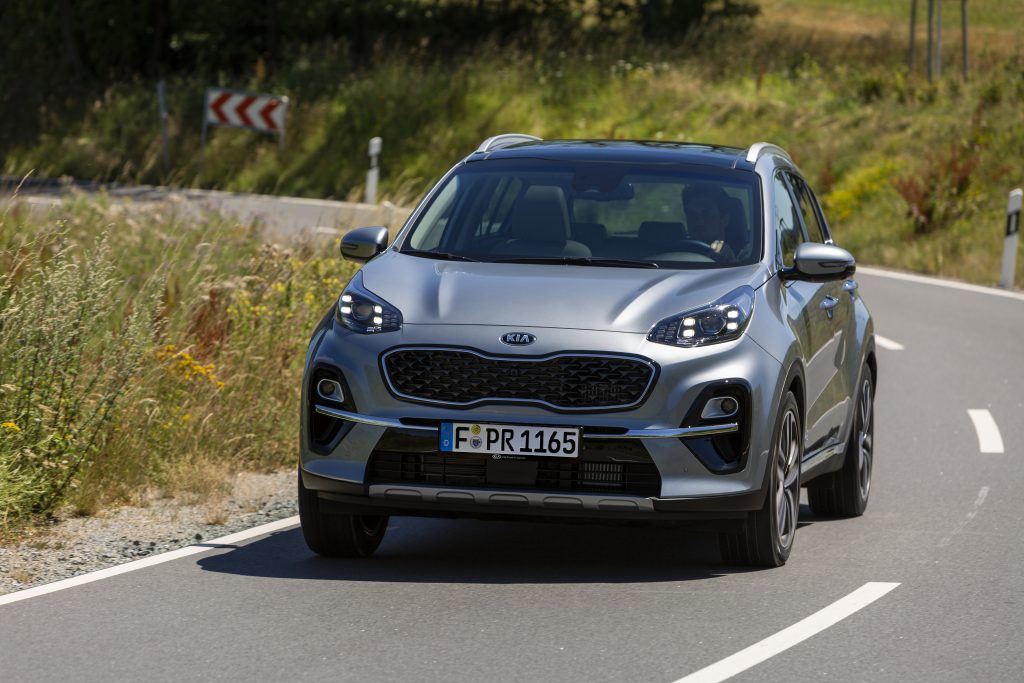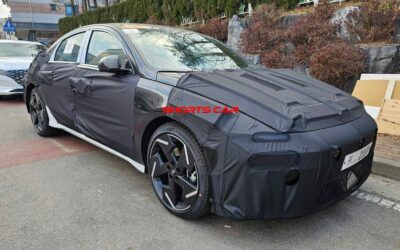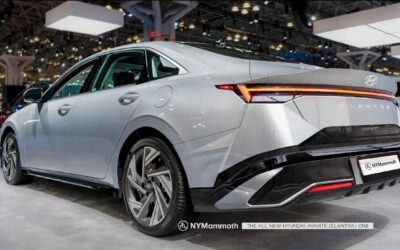The upgraded 2018 Kia Sportage features a range of enhancements to cement its position as the brand’s flagship SUV and its best-selling model in Europe. The new Sportage pairs an updated exterior and interior design with new safety and infotainment technologies, as well as efficient new powertrains complying with future emissions standards.
[ads id=”9″]
Upgrades to the Sportage range also include modifications to GT Line models. The car’s advanced new EcoDynamics+ 48V diesel mild-hybrid powertrain is the first to be launched as part of Kia’s global powertrain electrification strategy. With this development, Kia becomes the first manufacturer to offer hybrid, plug-in hybrid, battery-electric and 48-volt mild-hybrid technology across its full model line-up.
Kia will launch 16 advanced powertrain vehicles by 2025, including five new hybrids, five plug-in hybrids, five battery-electric vehicles and, in 2020, a new fuel-cell electric vehicle. More than 131,000 examples of the Sportage were purchased by European customers in 2017, representing a quarter of the brand’s total European sales. One Sportage was sold every 69 seconds globally in 2017, making it Kia’s international best-seller. The five-millionth Sportage was built in March 2018, three months into the car’s 25th year on sale, following its introduction in 1993.
The Sportage for Europe is produced at Kia’s manufacturing facility in Žilina, Slovakia. Emilio Herrera, Chief Operating Officer for Kia Motors Europe, commented: “The Sportage has been a major contributor to Kia’s growth in recent years, both globally and here in Europe. As the C-SUV segment continues to expand, the Sportage has introduced hundreds of thousands of European motorists to the Kia brand, and it now accounts for one in four Kia cars sold across the region.”
“As our flagship SUV in Europe, the Sportage represents the best of Kia’s brand values – great design, innovative technologies, and high quality. The upgraded model remains as compelling as ever, with our first diesel mild-hybrid powertrain, a refreshed design, and a series of new technologies to boost safety, comfort and convenience.”
The original design of the fourth-generation Sportage was led by Kia’s European design studio in Frankfurt, Germany, with input from the company’s design centres in Namyang, Korea and Irvine, California. For 2018, the three studios have modernised the look of the Sportage, which features a range of updates to its sporty exterior design.
Changes extend to GT Line models, which feature a series of unique upgrades compared to other trim levels. There is a redesigned front bumper with new fog lamp housings, and new gloss black or bright chrome inserts leading from the fog lamps into the lower air intake. The Sportage is also now available with an evolved version of its ‘tiger-nose’ grille, with new gloss black or matt black grille. New full-LED headlamps with four-point LED daytime running lights and redesigned fog lamps also provide maximum visibility and enhance the SUV’s light signature for a more modern appearance.
[ads id=”8″]
An optional metallic skid plate is available. At the rear, the slim combination lamps retain their horizontal shape, with the revised design featuring a new C-shaped LED light signature. The reversing lamp and reflectors are now integrated into the new rear bumper, which is now finished with a flash of chrome across its base. In profile, the upgraded model is available with a choice of new 16-, 17- and 19-inch alloy wheel designs, and optional chrome sill trim. Five new paint colours are available on the new Sportage, including new shades of silver, grey, metallic blue, and copper.
Changes to GT Line include a new gloss black hot-stamped radiator grille, gloss black and silver skid plates, and dark chrome inserts on the front bumper, the side sills and rear tailgate. The GT Line’s unique 19-inch alloy wheels have been redesigned, and all models are fitted with a dual exhaust rear valance and revised ‘ice cube’ LED fog lamp designs. A drag coefficient of 0.33 Cd remains unchanged following the changes to the SUV’s exterior design, while its dimensions and profile remain the same (4,485 mm long, 1,855 mm wide, 1,635 mm tall, with a 2,670 mm wheelbase).
The GT Line model is 10 mm longer, at 4,495 mm, due to its unique bumper design. While the layout of the cabin is retained, a series of minor upgrades further engender a sense of modernity. The upgraded model is equipped with a new steering wheel and revised driver instrument cluster, while the cabin is now available in new black-and-grey two-tone upholstery. GT Line models are available with new black-and-grey two-tone fabric and leather seats as standard, or with optional black-and-grey two-tone leather or black leather with red accents.
The design of the ventilation and air conditioning controls at the centre of the dashboard has also been revised, with new bezels around the dials adding further clarity to the dashboard layout. The Sportage now offers a wider range of engines, including Kia’s new ‘EcoDynamics+’ 2.0-litre ‘R’ diesel mild-hybrid powertrain and Kia’s new 1.6-litre ‘U3’ diesel engine – the cleanest diesel engine the company has ever made. EcoDynamics+ has been engineered to deliver greater efficiency from internal combustion engines on the road, by using electric power delivered and recuperated seamlessly.
[ads id=”8″]
In the Sportage, the system supplements acceleration with power from a compact 0.44 kWh 48-volt lithium-ion battery, and extends engine ‘off time’ with a new Mild-Hybrid Starter-Generator (MHSG) unit. The MHSG is connected by belt to the engine’s crankshaft, and switches seamlessly between ‘motor’ and ‘generator’ modes. In ‘motor’ mode the battery is discharged under acceleration, providing up to 12 kW of electric power assistance to the engine, to reduce engine load and emissions.
Under deceleration – when braking, or coasting towards a junction or downhill – the MHSG switches to ‘generator’ mode, recuperating energy from the crankshaft to recharge the battery on-the-go. An advanced Electronic Control Unit (ECU) calculates the most efficient use of available energy and adjusts accordingly, taking into account the amount of charge remaining in the car’s batteries. The battery and MHSG also support a new ‘Moving Stop & Start’ function. If the battery has sufficient charge, the combustion engine turns off automatically during in-gear deceleration and braking.
The MHSG seamlessly re-ignites the engine when the driver presses the throttle pedal. The compact nature of the mild-hybrid powertrain made it relatively straightforward to integrate into the Sportage’s existing architecture. The 48-volt battery is located beneath the boot floor, minimising the impact on practicality. Because the MHSG integrates directly with the engine, driving the crankshaft via a belt, there was little need to repackage the engine bay. Equipped with Kia’s Selective Catalytic Reduction (SCR) active emissions control technology, the new EcoDynamics+ powertrain can reduce CO2 emissions by up to 4% on the Worldwide-harmonised Light vehicles Test Procedure (WLTP) and up to 7% on the reconverted New European Driving Cycle.
[ads id=”8″]
The new EcoDynamics+ powertrain is paired with an all-wheel drive system, transmitting power via six-speed manual or a newly-adopted eight-speed automatic transmission. Producing 185 ps and 400 Nm torque, CO2 emissions for the new powertrain are rated from 138 g/km for models equipped with a manual transmission, and from 149 g/km when paired with an eight-speed automatic transmission (combined, WLTP, converted back to NEDC). Kia’s cleanest diesel ever The Sportage’s existing 1.7-litre CRDi (common-rail direct injection) diesel engine has been replaced with Kia’s efficient new 1.6-litre ‘U3’ CRDi engine, the cleanest diesel engine Kia has ever made.
The new 1.6-litre diesel engine produces 115 or 136 ps, with emissions rated from 126 g/km for 115 ps models, and 123 g/km for higher-powered models (combined, WLTP, converted back to NEDC). Driving the front wheels via six-speed manual transmission as standard, 136 ps models are also available with all-wheel drive and a seven-speed double-clutch transmission. The new U3 engine features SCR active emissions control technology to reduce NOx and diesel particulate matter. The line-up of gasoline engines remains the same in the upgraded Sportage, though with minor modifications to lower emissions.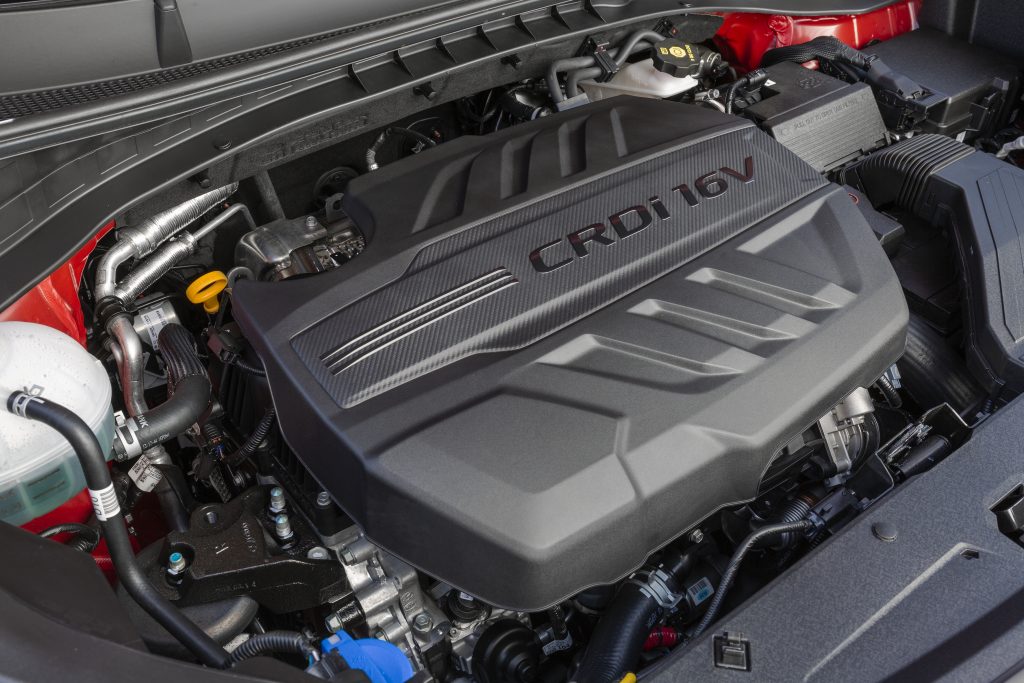
Buyers can choose from two gasoline engines. The 1.6-litre T-GDi (turbocharged gasoline direct injection) engine produces 177 ps and 265 Nm torque, with emissions from 170 g/km. The naturally-aspirated 132 ps 1.6-litre GDi engine offers torque output of 161 Nm, and CO2 emissions from 159 g/km. Both gasoline engines are now fitted with new gasoline particulate filters to further reduce harmful emissions, ensuring full compliance with the Euro 6d TEMP emissions standard. Sportage models equipped with the T-GDi engine are available with either front- or all-wheel drive, and a seven-speed double clutch transmission on all-wheel drive models.
Idle Stop & Go (ISG) is now standard across every engine in the upgraded Sportage range. The Kia Sportage rides on fully independent front and rear suspension, carried over unchanged for the 2018 upgraded model. Delivering a comfortable ride and superior damping over poor road surfaces, the chassis is nevertheless tuned to offer intuitive and engaging handling. GT Line models feature their own specially-tuned suspension characteristics, endowing the Sportage with sharper, more athletic handling and a slightly firmer ride – crucially, without compromising the SUV’s fundamental comfort and stability.
The suspension characteristics for the Sportage GT Line were tested and fine-tuned on a variety of European roads, with European drivers in mind. The fourth-generation Sportage is available with Kia’s ‘R-MDPS’ rack-mounted electric motor-driven power steering. Available as standard on most models, and as an option for the entry-level 1.6-litre GDi engine, the R-MDPS system delivers quick responses and enhanced steering feel, placing the Sportage among the most agile models in the compact SUV class. The Sportage is fitted as standard with a column-mounted power steering system, which delivers linear responses to driver inputs and maximum stability and confidence at the wheel.
[ads id=”8″]
The Sportage is equipped with 305 mm ventilated disc brakes at the front and 302 mm solid disc brakes at the rear. The upgraded Sportage adopts a series of Kia’s latest advanced driving assistance and infotainment systems, building on its reputation for high occupant safety and high-tech convenience. The latest driver assist technologies available in the Sportage include Smart Cruise Control with Stop & Go, an Around View Monitor for easier parking manoeuvres, and Driver Attention Warning, to combat fatigue and inattentiveness at the wheel.
Already a strong performer in Euro NCAP’s important ‘Safety Assist’ category, Sportage buyers have access to a wide array of existing driver assist systems. These include Forward Collision-Avoidance Assist, Lane Keeping Assist, High Beam Assist, Intelligent Speed Limit Warning, Blind-Spot Collision Warning, and Rear Cross-Traffic Collision Warning.
Every Sportage is equipped as standard with Kia’s Vehicle Stability Management (VSM), which maximises stability when braking and cornering by controlling the car’s Electronic Stability Control (ESC) if it detects a loss of traction. The Sportage is also fitted with driver and front passenger airbags, first-row side airbags, and first- and second-row curtain airbags. The infotainment systems in the Sportage have been upgraded for 2018. European customers have a choice of a 7.0-inch touchscreen infotainment, or navigation system, or a new ‘frameless’ 8.0-inch system.
Depending on market, each system supports the addition of DAB digital radio. All navigation systems include Kia’s Connected Services powered by TomTom as standard, offering a wide range of telematics and driving-oriented information. Connectivity features include live traffic updates, speed camera locations and alerts, local search, and weather forecasts, depending on legal restrictions applied in each country. New for 2018, the Kia Connected Services system in the upgraded Sportage also shows drivers the price of fuel at nearby filling stations, as well as the location and real-time availability of parking spaces.
The Sportage is equipped with a 160-watt six-speaker audio system. Audiophile owners can also specify an optional eight-speaker system from JBL, with a more powerful 320-watt output, external amplifier and Clari-Fi music restoration technology. Other available convenience features in the Sportage include a wireless smartphone charger at the base of the centre console, rear-view parking camera with dynamic parking lines, and a Smart Power Tailgate.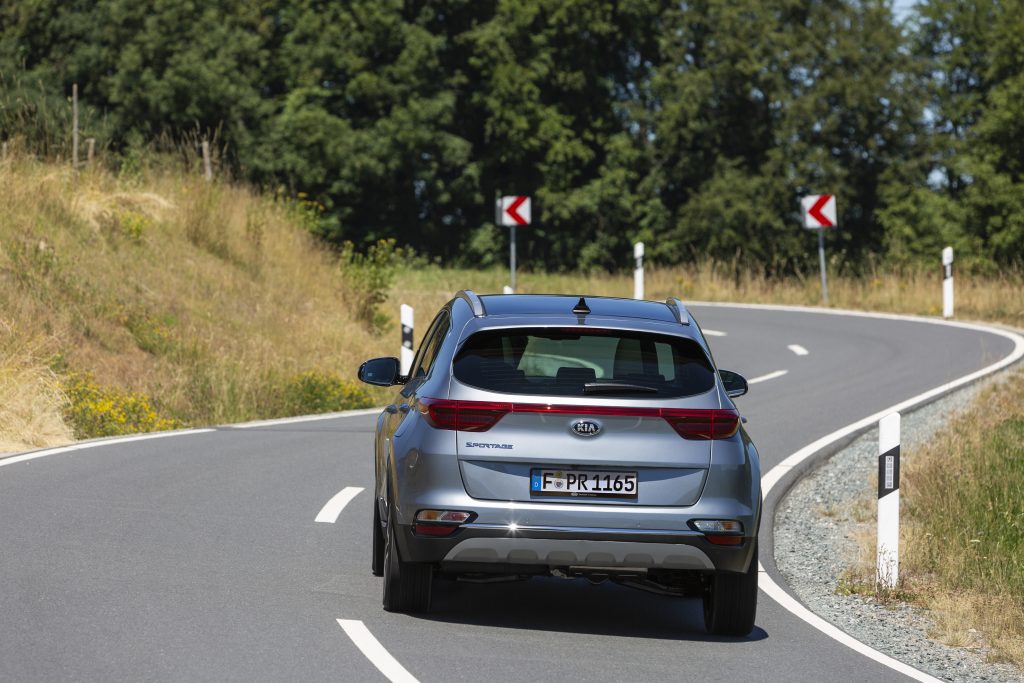
The Sportage remains a highly practical and versatile choice for buyers – whether owners are loading the car with luggage and cargo, or accommodating a full complement of passengers. Its 2,670 mm wheelbase and 1,635 mm height ensure occupants are never lacking for space, with 997 mm and 993 mm of headroom for front and rear passengers, and 1,129 mm and 970 mm of legroom, front and rear. The front seats can be specified with three-stage heating, plus 10-way power control with lumbar support for the driver’s seat, and eight-way power control for the front passenger. Reclining rear seats offer 17 ‘steps’ – from 23 to 37 degrees – allowing rear occupants to shift seat backs fore and aft for maximum comfort. Rear passengers can also benefit from two-stage seat heaters. ISOFIX anchor points are fitted as standard to all models, making the Sportage a practical choice for young families.
1.6-litre GDi and T-GDi versions of the upgraded fourth-generation Sportage offer between 491 and 503 litres (VDA) of boot space with all seats in place, depending on whether buyers opt for the standard tyre mobility kit or optional spare wheel. 1.6-litre diesel models provide between 467 and 480 litres, to accommodate the urea tank required for the new SCR active emissions control technology. Ecodynamics+ 2.0-litre diesel mild-hybrid models provide 439 litres of cargo space. 1.6-litre models are available with Kia’s dual-height luggage floor, while all models offer a dedicated under-floor storage area for the tonneau cover.

